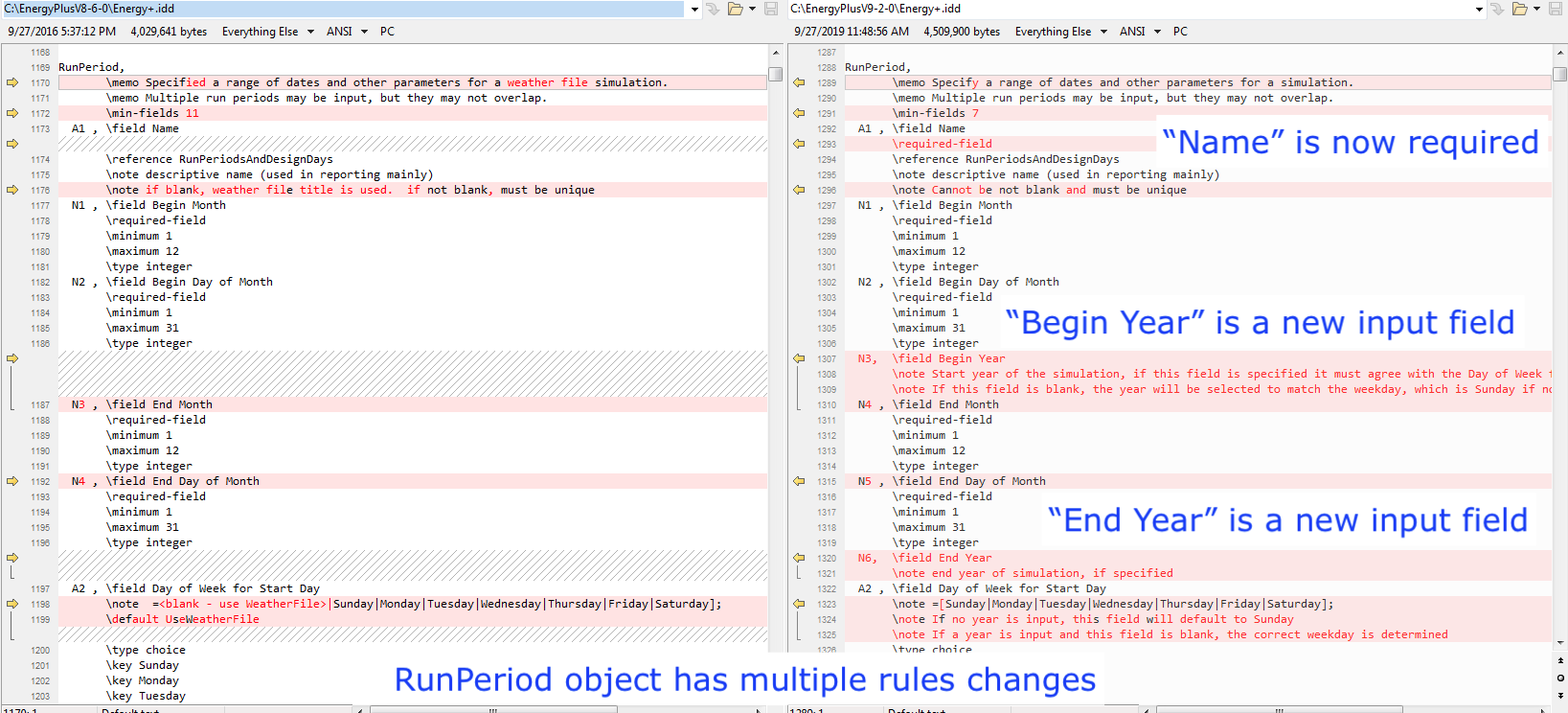First time here? Check out the Help page!
 | 1 | initial version |
You can automatically update IDF files from older versions to a current version in EP-Launch's File menu or as a standalone program called IDFVersionUpdater, but there is nothing like this that will automatically convert IDF files "backward" to older versions. If you want to do this, you will need to compare the Input Data Dictionary (IDD) file for each version to see what input field rules have changed between the versions, or if the object in the new version was even available in the older version. For example, if your v9.2 IDF has a Foundation:Kiva object for ground-contact surfaces, you couldn't use that in v8.4 because it was only added in v8.7. You would then have to make a copy of your v9.2 IDF and manually update it to v8.4 based on these IDD changes, which will be a very time-consuming process for larger models.
See examples below of comparing two IDD files using Beyond Compare (free diff tools like WinMerge would also work).

New object that didn't exist in older version

Object has rule changes to input fields from older version
 | 2 | No.2 Revision |
You can automatically update IDF files from older versions to a current version in EP-Launch's File menu or as a standalone program called IDFVersionUpdater, but there is nothing like this that will automatically convert IDF files "backward" to older versions. If you want to do this, you will need to compare the Input Data Dictionary (IDD) file file for each version to see what input field rules have changed between the versions, or if the object in the new version was even available in the older version. For example, if your v9.2 IDF has a Foundation:Kiva object for ground-contact surfaces, you couldn't use that in v8.4 because it was only added in v8.7. You would then have to make a copy of your v9.2 IDF and manually update it to v8.4 based on these IDD changes, which will be a very time-consuming process for larger models.
See examples below of comparing two IDD files using Beyond Compare (free diff tools like WinMerge would also work).

New object that didn't exist in older version

Object has rule changes to input fields from older version
 | 3 | No.3 Revision |
You can automatically update IDF files from older versions to a current version in EP-Launch's File menu or as a standalone program called IDFVersionUpdater, but there is nothing like this that will automatically convert IDF files "backward" to older versions. If you want to do this, you will need to compare follow this procedure:
For example, if your v9.2 IDF has a Foundation:Kiva object for ground-contact surfaces, PerformancePrecisionTradeoffs object, you couldn't use that in v8.4 because it was only added in v8.7. You v9.2. Another example would then have to make a copy of your be the RunPeriod object, which had various input field rules changes between v8.4 and v9.2 IDF (Name input field is required and manually update it to v8.4 based on can't be left blank, new input fields added for Begin Year and End Year, etc.). Screenshots below illustrate how these IDD changes, which will be a very time-consuming process for larger models.
See examples below of are found while comparing two IDD files using Beyond Compare (free diff tools like WinMerge would also work).

New object that didn't exist in older version

Object has rule changes to input fields from older version
As you can expect, this will be a very manual and time-consuming process.
